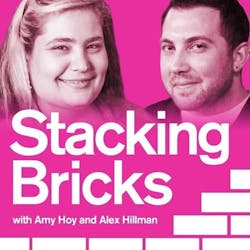Written by Amy Hoy in 24 hours, Just Fucking Ship is about 21 principles for people to get their creative ideas out of their head and into the real world.
He is a front-end developer, working full-time in Dublin at a company that helps athletes avoid injury. He is a dad and works on his own side projects whenever he’s not working.
Donovan describes it as a basic affiliate site that works like Amazon, but shows the prices in euros. It was a site for Irish people because it had Irish branding and support where Irish people could seek help from people in the same country with similar perspectives as them.
Following along to tweets by Amy, Donovan states that the way that she approaches branding and launching things, and it resonated with him. He was inspired how she wrote Just Fucking Ship within 24 hours, so he bought the book and used it as his structure to starting up his business.
For Donovan, it was a way for him to test out which topics worked and gained traction. It encouraged him to write certain posts that people would like. To help gain more notice from his posts, he would reach out to some CSS or web design sites looking to feature writers. This helped him gain an audience quicker.
Donovan has noticed that the posts people like tend to have a clear, visual goal. He writes two types of posts. The first is somewhat out there, demonstrations of something he's created with using just CSS and HTML. People would want to know how he created it, so they'd read the post.
The second type of post is one that he considers more practical and one that people will use more frequently. He gives the example of writing out the process of how to show items on a list on a webpage.
Donovan says that the less positive feedback is still helpful for him. People have offered him solutions to problems that they have seen, or thought something wasn’t done the right way, so they’ll offer him an alternative.
Donovan first had an idea to collect his best posts to create into a book that talks about CSS animation, but he wasn't ready to commit to the project. He then had the idea to write a course about introductory concepts regarding transitions and animations, and where you may want to use them. The next step was to make an email course, then work on a landing page.
Inspired by a book that he read over Christmas, Donovan followed the structure and aligned with the goals of a landing page, which are: describe the pain, describe the problem, offer a solution, and then take the call to action. Then, include links to validate your own expertise, then follow the call to action again.
Every successful product launch has things to improve on later, but the only way to fail is to never launch at all.
He was nervous that it would work. Donovan says that it was a little easier to think if it didn’t work, then it woudn't be a big deal. His fear was that if his product really took off, then he wouldn’t know how to react because he’s never been in that position before.
Donovan says that when he had the first initial week, he was surprised by the amount of signups. The later weeks were tougher because the momentum wasn’t there yet. He says that the early adopters were his big rush during the first week, then it was quiet for a couple of weeks afterwards.
For Donovan, he looked at the first week and viewed it as a success, even if he didn’t have any more sales the rest of the month. He was mainly focused on getting through the course and was happy that people were paying him for his course.
Donovan says that rather than jumping straight in and build something big, if you really want to get some momentum started, the best thing that he did was write a blog post. They are easy to do and they require minimum commitment.
